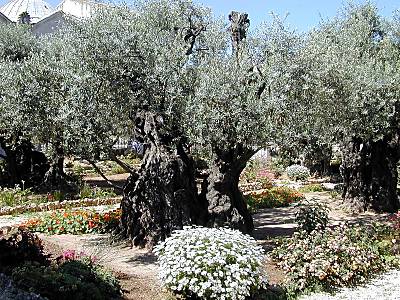Agony in Gethsemane: A Tale of Three Gardens
Recently I preached on the heart-wrenching experience which our Lord Jesus Christ had in the garden of Gethsemane the night in which he was betrayed and which culminated in his death on cross for the sins of his people. The primary text I spoke from was Luke 22:39-46. Here we see our Lord in all his humanity. Here we see proof positive that our Lord was one person with two natures: the divine and human. Here our Lord contemplated with horror the events that would soon follow. Here our Lord cried out that if it was possible that the Father bring about our redemption some other way than by his death on the cross that it be so. In the end, however, he obeyed the Father and humbled himself to the point of death. Certainly our Lord anticipated the horrors of the physical pain he would endure. But more than that he anticipated the spiritual horrors of separation from his Father. The Son had never ever missed a moment of sweet communion with the Father up to this point. But once he was nailed to the cross he would experience the dark shadow of the Father’s back. For you see, Jesus took upon himself the sin of his people and became a curse for us so that we would not have to bear the curse ourselves. He would experience dereliction. What amazing grace!
But why did Jesus find himself in such agony in this garden? And what did he achieve?
The answer to the first question is that Christ came to reverse the dreadful effects of that dastardly dead of our first parents in the Garden of Eden. In Genesis 2 & 3 we find God telling Adam that he could eat from any tree in the garden except the tree in the midst of the garden: the tree of the knowledge of good and evil. Further on we watch in horror as Eve eats from the fruit of that tree and shares it with her husband Adam who was with her. When Adam and Eve disobeyed God they were kicked out of the garden. Notice that Adam and Eve failed to obey God in the lap of luxury while our Lord did obey his Father while incarnated in a fallen world (he, of course, was sinless). While Jesus struggled with obeying the Father’s will, our first parents never gave obedience a second thought. Whereas Adam wanted to be like God, Jesus-true God and true man-set aside his royal prerogatives. Jesus sweat great drops of blood in the garden of Gethsemane because Adam and Eve sinned with such little resistence in a garden paradise in Eden.
But east of Eden Gethsemane would be necessary as part of the complex of events that culminated in the cross. Even better, the cross was not the end of the story. The cross was not the last chapter written in our narrative of redemption. The resurrection reversed the verdict of guilty writ large across the cross. Jesus did not just appear to be condemned. No, he was condemned because he bore our sins in his own body on the tree. He arose early that Sunday morning, indicating God’s vindication of his son and eventually Jesus ascended to the Father’s right hand.
But there is another garden. We have moved from the center of the story in the garden of Gethsemane backwards to the garden of Eden and now we move forward to the garden-city of the New Jerusalem. In Revelation 22 we find the saints who have overcome by the grace of God dwelling with God and his Lamb in the city which John saw coming down out of heaven. This city, note well, is a garden-city. The saints worship God and the Lamb and from the thrown flows the water of the river of life and on either side of that river grows the tree of life which fruit is for the healing of the nations. The saints may dwell with God because they have been washed in the blood of the Lamb and because they have about them the white robes of Christ’s righteousness. They have overcome not because of any inherent strength in themselves but because of the strength of Christ and his Holy Spirit.
We see here the panorama of creation, fall, redemption, and consummation telescoped into three gardens. Jesus agonized in the garden of Gethsemane in order to reverse the fall in the garden of Eden so that he could bring many sons to glory to dwell with him in the garden-city of the New Jerusalem.
I ask you one question: have you trusted in the one who agonized in the garden of Gethsemane? Have you grabbed a hold of the blood stained garments of the Lamb of God? Have you seen your complicity in the disobedience of Adam and Eve in the garden of Eden? Do you long to spend eternity with our glorious triune God in the new heavens and the new earth? There is only one way to dwell in the garden-city and that is by trusting yourself to the Lamb who agonized in Gethsemane on his way to the cross. In the end, however, we do not trust in a dead Savior but we throw ourselves at the pierced feet of a Living Lord. When we have believed on the Lord we have eternal life now and hereafter.



